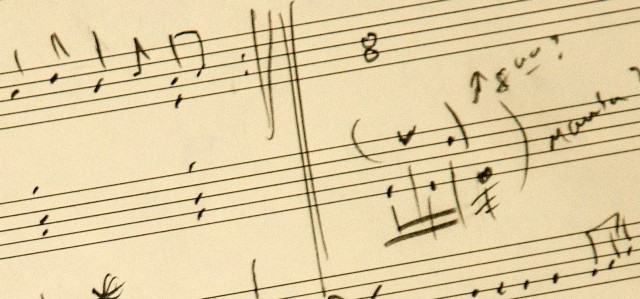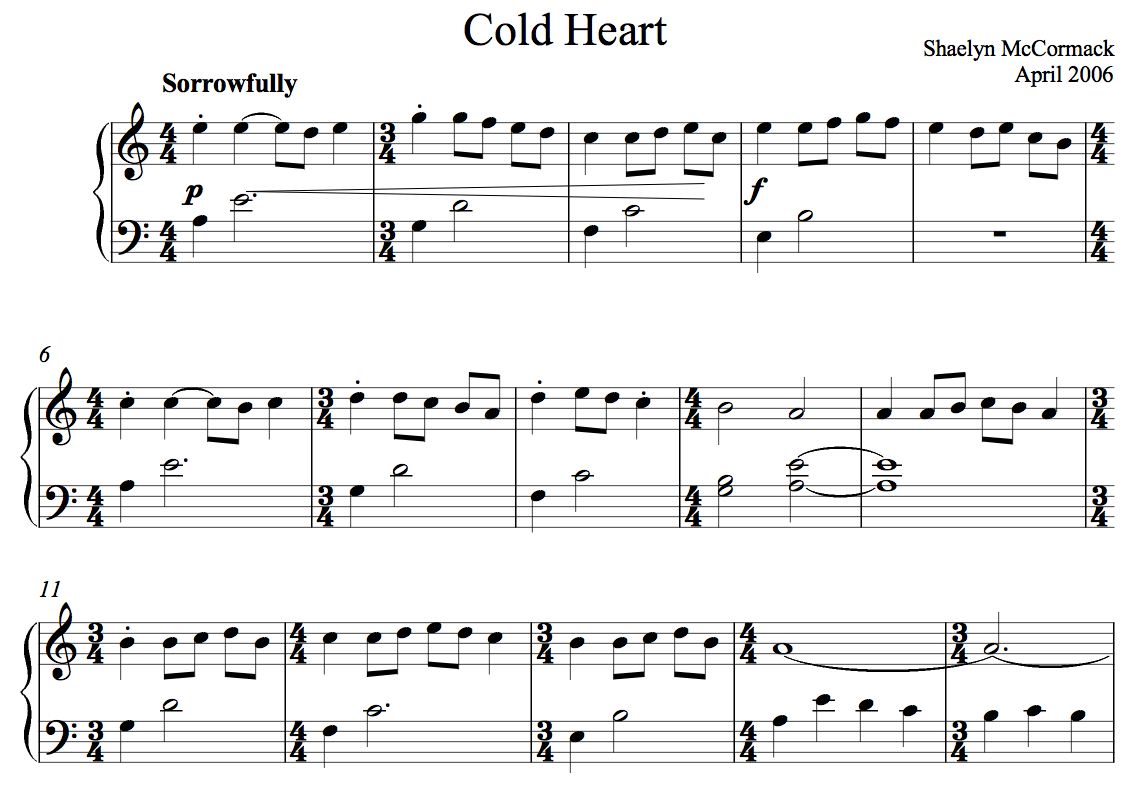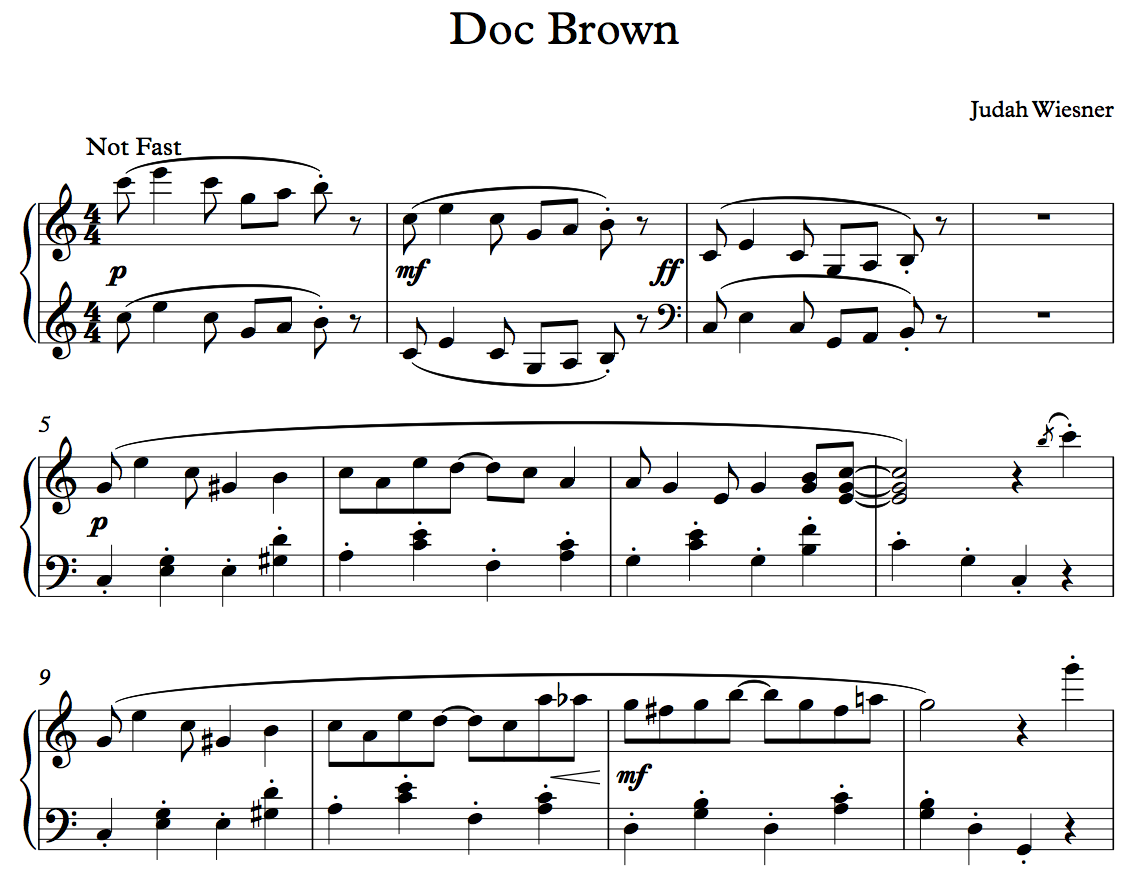
In my studio, the new year marks the beginning of composing season, during which each of my students will write at least one composition. A couple of my students typically will write one or more pieces on their own, but most of my students need some level of guidance and encouragement to get them from the beginning of the piece to the end. Some of my youngest students will take only a couple of lessons to complete a short piece. Usually at least one student hates everything he or she writes. In this case, the process reminds me of one of those made for TV movies I saw as a kid, where I am the farmer blindfolding the panicking horse so that I might lead it out of a burning barn. But most of my students enjoy the process and are quite proud of the end result.
I require my students to compose for several reasons:
- I am an active compose partly because one of my early piano teachers encouraged creativity beyond what was written on the page. I may not have pursued this passion if that door hadn’t been opened for me by that teacher. Hence, I believe it is important to crack this door open for every student, at least to offer a glimpse of one potential creative passion a student might embrace.
- I want my students to know that music is not written only by dead white men or far-away, glamorous rock stars. It can be written here and now, by anybody, including a five-year old beginning piano student.
- Writing music offers great opportunities to dive deeply into music analysis. My younger students write to conform to basic musical forms, while my older students analyze works that they have enjoyed playing and write music modeled after that.
At the end of the academic year, I gather all of my students’ compositions and self-publish them in a professionally printed and bound book for my students to own. This book makes great sight-reading material for future lessons. The last recital of the year is our original composition recital, where the student each perform the pieces that they have written. It is easily my favorite recital of the year.
Any teacher will tell you that they learn from their students, and teaching composition offers no exception to this. My students always come up with pieces that surprise me. I analyze these pieces to figure out what makes them work.
Sometimes it is my younger students who, because they do not know “the rules,” are able to surprise me the most. For example, I remember the first year I started my students composing a six-year-old named Marianne wrote a melody in 3/8 with five-bar phrases. Thinking that I would need to help her write a left hand part, I struggled to find a left hand pattern that would adequately complement her melody. I tried various Alberti, um-pah, and block chord accompaniments. Each pattern I tried failed to support the 5-bar phrase length. At the next lesson, she showed me that I needn’t have bothered with my efforts, because the pattern she composed for her left hand was, from my point of view, brilliant and unique. By completely inverting the um-pah-pah pattern, she shifted the “weight” of the accompaniment pattern in such a way that the phrase could convincingly close on bar five and restart on bar six. The first two lines of her piece are shown below:
I found 10-year old Shalyn’s piece entitled Cold Heart interesting because of its varied meters and seemingly endless phrasing:
I’ve had students compose pieces where the shifting implicit meter is complex enough that I couldn’t tell you without counting where the notated beat one is, yet somehow everything lines up on a very “normal” 16 or 32 measures of 4/4. Or their phrase lengths are so odd that you can’t help but wonder how the piece landed there so convincingly. One student (my daughter) inadvertently invented a scale that I’d never seen before, and I ended up using that scale in at least one of my compositions. A recent student embraced the dramatic potential of the piano and treated the score like a canvas to be painted with sweeping gestures of the paintbrush. I have a current student who doubles up in lessons so we can devote lessons solely to composition, and his sense of orchestration constantly amazes and teaches me.
The majority of the works, though, are standard in form, yet still intensely creative. I love it when my students are interested in analyzing a work they enjoyed playing and writing something in a similar genre. Ragtimes are easy works to model, as demonstrated by the opening lines of this piece written by an 11-year-old:
Composition is a natural extension of a complete musical education. The Suzuki Philosophy introduces the concept that music can be learned in the same way a child learns language: a child hears, then imitates, and then reads. To me, it makes complete sense that the next step in language learning should also be taught in music: the child learns to write.
I start my Master’s of Fine Arts in Composition this coming January. I’ll be studying at the University of Birmingham (U.K.). It is one of the few master’s in composition programs I found that would allow me to work from home. With my mind on composition both in my studio and in my personal studies, I’m sure that during the coming months I will be finding plenty of opportunities to be posting little tidbits about composing and teaching composition.


